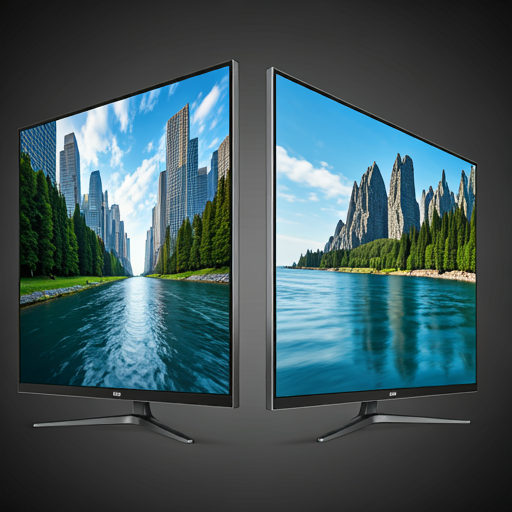It has few layers to its structure consisting of a backlight, a liquid crystal layer, polarizers, and glass substrates. These liquid crystals change light to produce images that are backlit.
**LED** – Abbreviated for Light Emitting Diode: LCD vs LED brings along all the technological details on technology used in the backlighting of a standard LCD. Thousands of tiny diodes light up an LED-backlit display to illuminate the LCD panel. Major Flavors for LCD vs LED backlighting – There are two major Flavors. A full-array LED monitor features LEDs behind the actual display, in a grid that can be controlled more precisely for brightness and contrast. An edge-lit LED monitor has the LEDs along the edges of the display.

Picture Quality of LCD vs LED
Of course, the first on the list is the quality of the picture, which largely decides the consumer decision. For that matter, the classical LCDs having problems due to backlighting with the help of cold cathode fluorescent lamps can even suffer from weak contrast ratios and even poor representation of colours. But LED-based backlighting has resolved this problem for many LCD vs LED.
**LED-backlit LCDs**: Brighter, with a lot better contrast. Full-array LED backlighting will allow for the ability to dim or brighten certain parts of the screen with local dimming. This should lead to deeper blacks, and thus better image quality, than the standard LCD vs LED.
It is energy-efficient. LED technology is quite often more energy-efficient as compared to the CCFL backlighting technologies used earlier. It consumes low powers. This in turn translates to saving a few kilowatt-hours of electricity besides making electronic components for portable systems last longer. This advantage makes the use of these LCDs backlit with LEDs even more environmentally friendly.

Thickness and Design of LCD vs LED
With LED technology in place, now we could have thinner and lighter screens. It’s so because LEDs are much more efficient and consume much less power than their traditional counterparts, that is, backlit screens, and manufacturers could thus design thin and light-weight screens with no performance penalty. This brings about ultra-thin TVs and monitors which can easily blend well with modern living.

Viewing Angles of LCD vs LED
Another drawback of the older LCD technology, of course, featuring LED-based ones as well, is that viewing angles are rather narrow. While LED technology generally has more brightness and contrast, color and quality will deteriorate generally at extreme viewing angles. Some of the newer LCD vs LED technologies, including IPS minimize these effects but are typically pricey.

Lifespan and Durability of LCD vs LED
LCD and LED-backlit LCD have long lifespans. LEDs, however relatively stronger are attached. Backlights with LEDs suffer very few from burn-in problems as compared to OLED technologies. Thus, it makes LED-backlit LCD a reliable product for applications in consumer electronics to professional use.
Cost of LCD vs LED
While they consume a bit more than the average LCDs, LCDs are drastically cheaper compared to LEDs in general. With the heavy usage of the LED however, coming on now, what was once a highly diminished price difference between the two has also grown. Indeed, LEDs may run you a few dollars more, but that may very well translate into great rewards to the consumer in terms of better performance.
Whereas LCD and LED constitutes the nomenclature wherein everyone compares these two, actually, former refers to the technology applied for backlighting LCD displays. Quality of the LED-backlit LCDs comprises improvement in the quality of the picture much beyond LCD with CCFL backlit displays besides efficiency and design flexibility. Choice between them really depends upon the picture quality, consumption, and application. Over time and its evolution, it is revealed that the installation of LED backlighting is a good step towards better display performances.
Conclusion
Generally, LCD and LED are so different on such a grand scale; thus, they have wide-reaching implications upon performance, as well as the user experience. LCD displays are very reliable on the issue of color accuracy but totally utilize the old backlighting technology; LED, however, is advanced and generally better contrast, the images are brighter, and energy efficiency is improved.The choice between the two would depend upon intended use, viewing environment, and budget. When considering better picture quality and performance in bright settings or full high-definition media, LED would appear to be a better option. Understanding these differences should guide getting a display that best suits your purposes and preferences.
FAQS
What’s the Difference Between LCD and LED ?
The main difference between LCD (Liquid Crystal Display) and LED (Light Emitting Diode) monitors lies in their backlighting technology: LCD monitors use cold cathode fluorescent lamps (CCFLs) for backlighting. LED monitors use light-emitting diodes for backlighting.
Pingback: LCD vs OLED